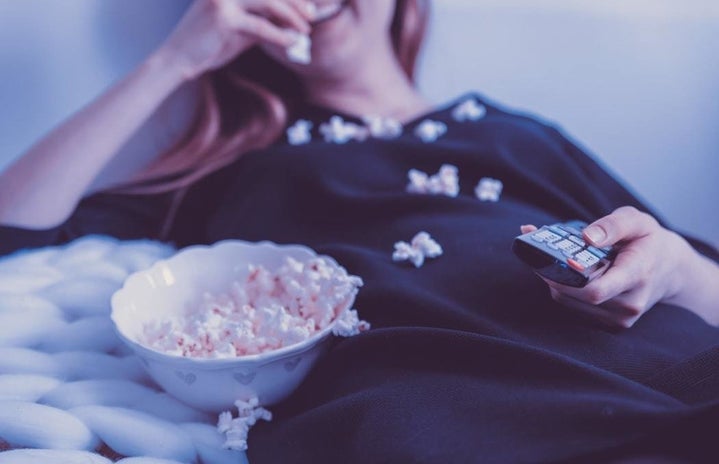I woke up on March 31, to a flurry of text messages from my friends all talking about “13 Reasons Why,” the messages all ranged from confusion to thrilling and a lot of “!!!!????”, while attempting to avoid spoilers from my friends, I quickly logged onto my Netflix account and began my journey through the tapes.
“13 Reasons Why,” based on the 2007 novel Thirteen Reasons Why by Jay Asher, begins a few weeks after the death of Hannah Baker (Katherine Langford). Clay (Dylan Minnette), a socially awkward classmate who had a crush on her, receives a shoebox full of vintage cassettes.
The cassettes contain Hannah’s description of 13 events that led to her decision to commit suicide, each being addressed to a specific classmate or adult who caused that particular trauma for her. She left instructions on the box, which stated that the box must be passed from one person to another, and Clay is late in the list, most of the people who caused her pain have already heard them before he gets them.
Like Clay listening to the tapes, it took me awhile to get through the show; while most of my friends watched the show in a day I was falling behind because to me it was too heavy to watch all the way through. But, when I did finish it, I was left feeling empty because it makes you realize that things for teenagers have only gotten harder and worse.
Even though Asher’s famous novel was published a little more than a decade ago, the subject still remains painfully relevant. “13 Reasons Why” shows that the high school environment can be cold-hearted; there is no separation between our public and private lives. It’s become so blurred that people know everything we do – whether we like it or not. Sexting and revenge porn and cyber-bullying were nonexistent when Asher’s book was written, but now these things make us feel as though we know the ins-and-outs of everyone’s life.
The show’s use of constant social media reminds its audience that, though it does keep us connected, it can also make us feel isolated.
The Netflix original serves an important dialogue: that we are the problem and everything we do affects someone in a certain way. It makes teens, the shows core audience, watch things that teens themselves are capable of doing; at the end of the day we see how our actions play out in school, but we don’t see how they play out when we all go home.
Australian newcomer Katherine Langford stunned in this series. Hannah’s journey of misery and humiliation is a horrible one to watch, but Langford’s heartbreaking openness makes you root for a fate you know isn’t possible. It is a really nice juxtaposition to Minnette’s gloomy awkwardness because when scenes with Minnette start to become a little uncomfortable Langford jumps in with such a dynamic range.
“13 Reasons Why” is not perfect, it could have done better with exploring Hannah’s depression and it can be triggering to watch – especially if someone has had a history of sexual violence or suicide ideation.
However, I do applaud the creators for making space for these kinds of discussions ones that seem to be taboo from society.
[Feature image by Time]


